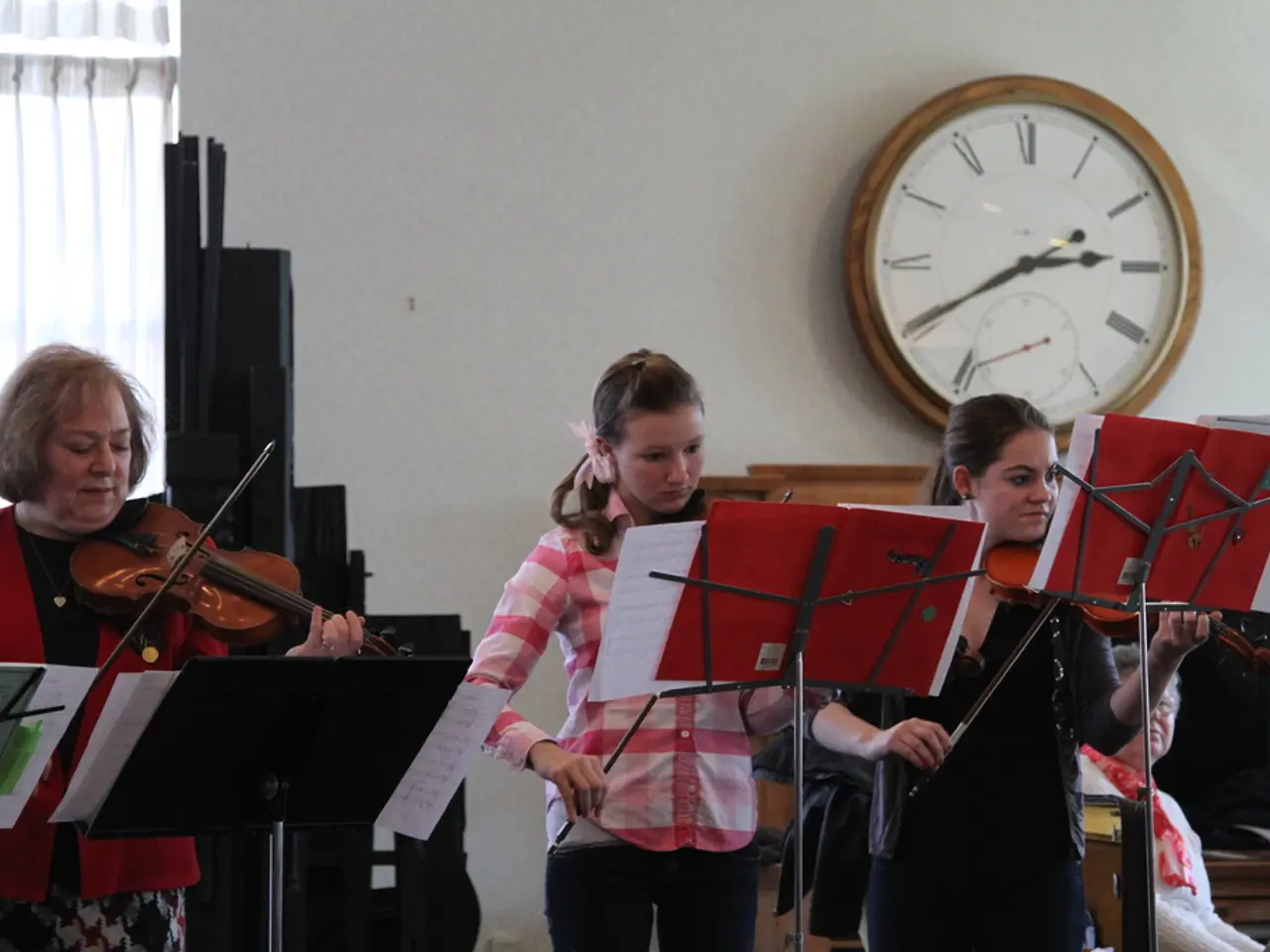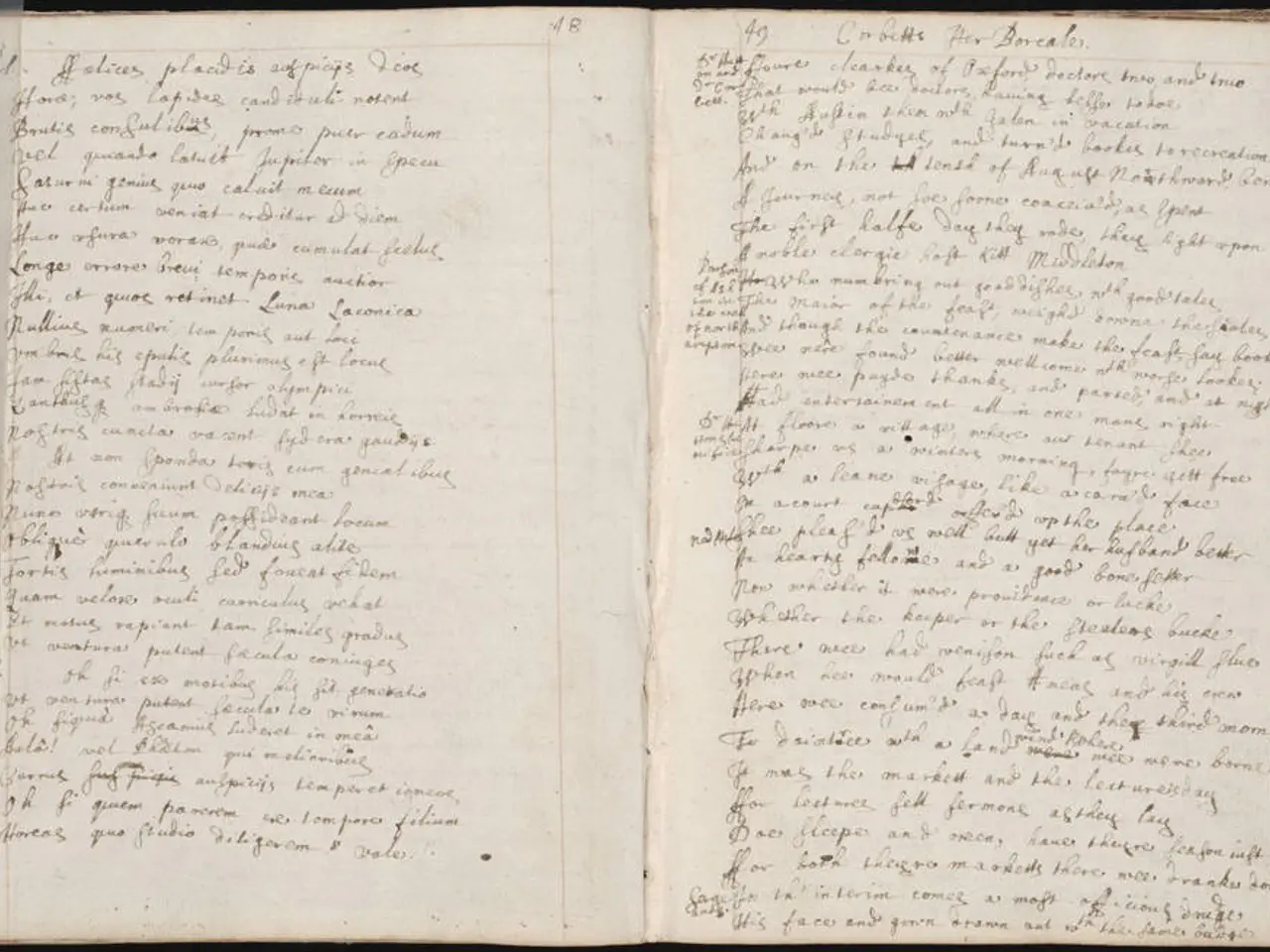Failed to attend scheduled performance for "The Symphony Sisters" ensemble
In a recent development, Michel Tremblay's classic play, "Les Belles-sœurs," has undergone a significant transformation through a symphonic adaptation. This adaptation, titled "Belles-Sœurs Symphonique," is based on the musical theatre version by René Richard Cyr and Daniel Bélanger, with the symphonic arrangement by Simon.
The symphonic adaptation merges theatrical storytelling with orchestral music, creating a symphonic concert experience that highlights the cultural importance of "Les Belles-sœurs" in Quebec's artistic heritage. The adaptation is gaining attention and is featured in contemporary concert seasons, demonstrating its ongoing relevance and appeal.
Lorraine Pintal is responsible for staging the symphonic adaptation. The characters wear dresses evoking the 1960s, and the production enriches the original play’s narrative and emotional depth by integrating symphonic elements. Symphonic orchestrations enhance the preciosity of "J'ai honte" and the grandiloquence of "L'ode au bingo."
However, not all productions of "Les Belles-sœurs" have been met with success. Dina Gilbert directs a separate production of the original version, which was marred by numerous and recurring technical problems during its opening night. Lines were forgotten, tempos lost, and some choruses and solos were missing due to disabled microphones.
Despite these issues, some performances stood out. Judi Richards' pleasure in "Les clubs" is highly contagious, and Kathleen Fortin's interpretation of "Mon vendeur de brosses" is canonical and has not aged. Luce Dufault sings "Crisse de Johnny" with all her soul, but the original version's jazz, soul, and gospel accents are missed in this production.
Renée Wilkin's poignant interpretation of "Maudit cul" is worth the price of admission alone, and Marie-Denise Pelletier's performance of "Gratis" is operatic but effective. Nathalie Choquette was born to play Lisette de Courval and sing "J'ai honte."
The symphonic adaptation of "Les Belles-sœurs" marks an important development in recent years by merging theatre and symphonic music, thus reinforcing the play’s cultural significance and sustaining its legacy through a contemporary artistic lens. Meanwhile, the original production, despite its technical challenges, continues to showcase the enduring appeal of Tremblay's work.
The symphonic adaptation of "Les Belles-sœurs," titled "Belles-Sœurs Symphonique," fuses theatrical storytelling with orchestral music, providing a symphonic concert experience that underscores the play's cultural importance in Quebec's artistic heritage. This symphonic version, with its integration of symphonic elements, offers a fresh take on the play, showcasing aspects of entertainment and the arts.
Contemporary concert seasons feature the symphonic adaptation, demonstrating its ongoing relevance and appeal in the contemporary arts scene, while the original version still showcases the enduring appeal of Tremblay's work.








